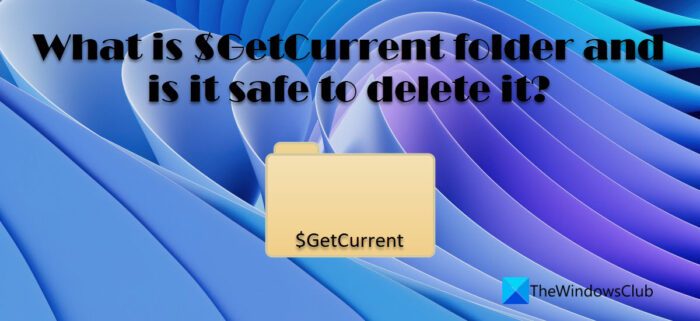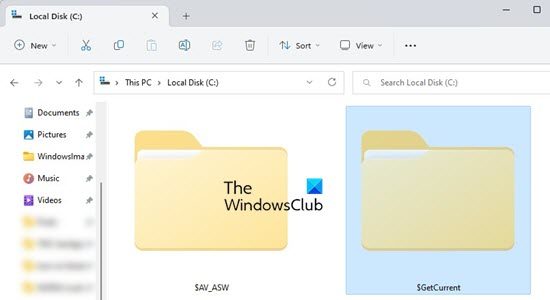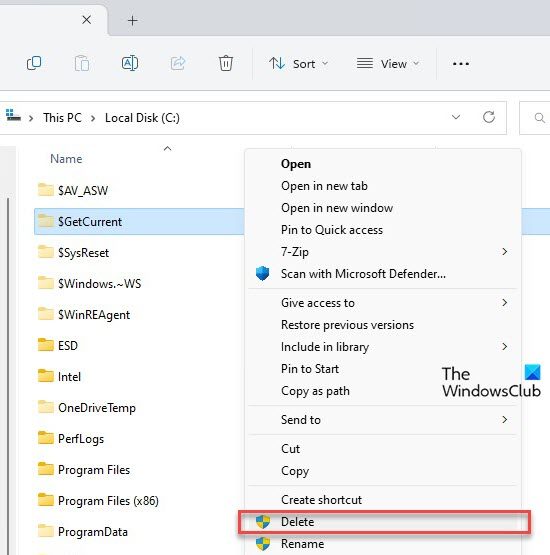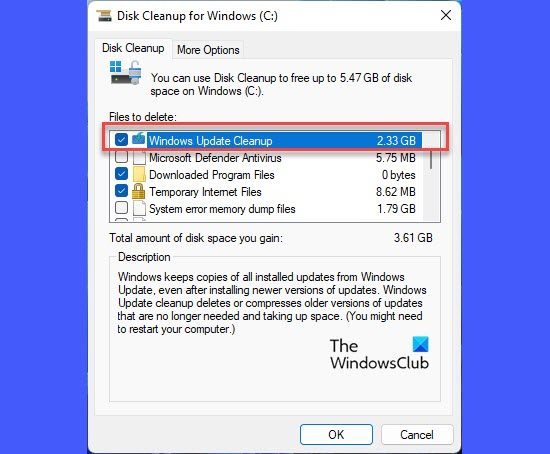This post explains the $GetCurrent folder and if it is safe to delete it? If you’ve ever encountered the $GetCurrent folder while looking for unnecessary folders to free up space on your Windows PC, you might be thinking, what kind of a folder is the $GetCurrent folder, why is it taking so much space on your PC, and can you safely delete this folder? This post answers all these questions.

What is $GetCurrent folder in Windows 11/10
$GetCurrent is a folder that gets created in the root directory of the C drive (C:\) of your system when you upgrade Windows. It contains subfolders (such as Logs, SafeOS, etc.) containing log files and/or installation files from your last Windows update process. The $GetCurrent folder is usually small in size. But if it contains some leftover Windows Update installation files, it takes up considerable space on your hard drive – around 3.5 GB or so – leaving you to wonder if you could safely delete it to free up disk space.

Is it safe to delete the $GetCurrent folder?
You can safely delete the $GetCurrent folder if you have successfully finished installing Windows Update and no longer need to review the log files. These files are anyway set for automatic deletion by Windows after 30 days. You may check the ‘Date modified’ field for each file in the $GetCurrent folder. If it appears to be older than 1 month, you can delete the folder manually.
Read: How to reclaim space after upgrading Windows 11 to a newer version.
How to delete the $GetCurrent folder?
By default, the $GetCurrent folder remains hidden on your Windows PC. If you’ve enabled your hidden files and folders, you will able to see this folder. If not, you can enable hidden files and folders to access the $GetCurrent folder. Once enabled, you can delete it using on of the following methods:
- Using Windows File Explorer
- Using the elevated Command Prompt
Let us see these methods in detail.
Tip: Create a system restore point before deleting any system folder on your Windows 11/10 PC.
A] Deleting the $GetCurrent folder using Windows File Explorer

- Click on the Windows Search icon and type ‘file explorer’.
- Select the File Explorer app that shows up on top of the search results.
- In the File Explorer window, select Windows (C:) drive from the left panel. You should see the $GetCurrent folder listed on the right panel.
- If you do not see the $GetCurrent folder, click on the View menu on top.
- Select Show > Hidden items. You will now be able to see the $GetCurrent folder. (If you’re still not able to see this folder, you’ve not upgraded your Windows OS yet.)
- Right-click on the $GetCurrent folder and hit the Trash icon. If you get a UAC prompt, select Yes to continue.
B] Deleting $GetCurrent folder using elevated Command Prompt

- Open an elevated Command Prompt (run Command Prompt using administrator rights).
- In the Command Prompt window, type the following command:
RD /S /Q "C:\$GetCurrent"
- Press the Enter key.
Notes:
- When you delete the $GetCurrent folder using one of the above methods, it will be moved to the Recycle Bin. You need to empty your recycle bin to permanently delete the folder.
- If you’re not able to delete the $GetCurrent folder, you may have some pending update that needs to be installed on your Windows PC. In that case, you can either finish installing the update or delete any Pending updates.
- You may also delete Windows updates that are no longer needed by your system using the Windows Update Cleanup option in Windows built-in Disk Cleanup utility.

Is it safe to delete the $GetCurrent folder?
Once the Windows Update is installed properly, the content of the $GetCurrent folder are no longer needed. In such a case, you can delete this folder from your C drive without any risk. To delete the $GetCurrent folder, you can use the above two methods described in this post. Make sure to sign in to Windows as an administrator before you attempt to delete the $GetCurrent folder.
Read: What is this $WinREAgent folder I see on C Drive?
What happens if you delete $SysReset?
$SysReset folder is another hidden folder that gets created in the root directory of your C drive when you perform a system Reset. If you delete the $SysReset folder, all its subfolders will be deleted. These folders carry logged information about why the refresh/reset may have failed; if it succeeded, they carry the list of changes made during the refresh/reset. If you don’t need this information, you can safely delete $SysReset from your system.
Read: What is the EFSTMPWP folder?
Is it safe to delete $WinREAgent folder?
Yes, it is the same to delete the $WinREAgent folder from your Windows 11/10 computer. However, before doing so, you must know the purpose of this folder so that it is easier for you to decide whether to delete it or not. For your information, this folder contains a temporary System Restore point that your PC uses only when it fails to update your computer.
Read Next: Can I delete $Windows.~BT & $Windows.~WS folders after Windows Upgrade?
Leave a Reply